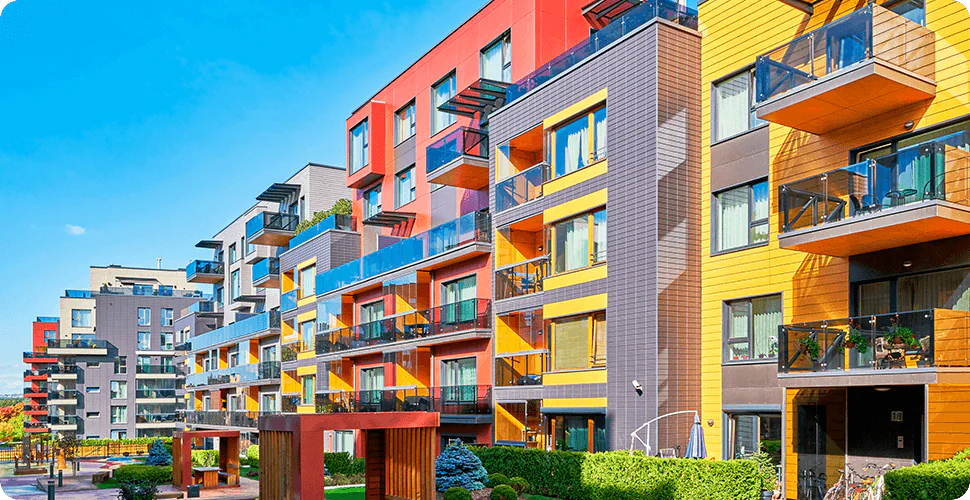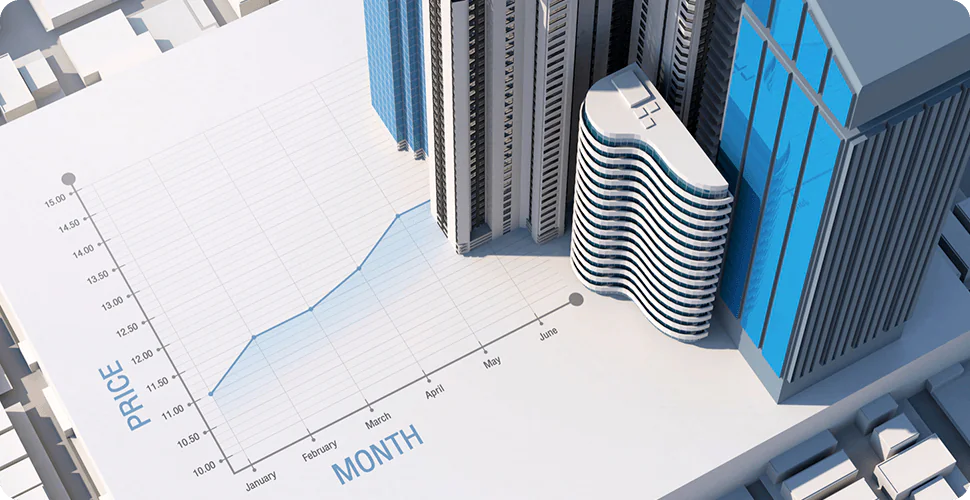Multifamily Homes: The Best Guide to Investing and Managing

Multifamily homes have become a cornerstone in the real estate investment landscape. This comprehensive guide will delve into the multifaceted world of multifamily homes, providing you with the knowledge and strategies to navigate this lucrative market successfully.
Table of Contents
Understanding Multifamily Homes
Multifamily homes, as the name suggests, are residential properties designed to house multiple families or individuals in separate units within the same building or complex. These properties range from small duplexes, triplexes, and fourplexes to larger structures like apartment buildings and condominiums. Each unit typically has its own living facilities, including a kitchen, bathroom, living area, and separate entrance.
What is a Multifamily Home?
Multifamily homes are a unique type of real estate that caters to a diverse range of tenants. They are particularly popular in urban areas where space is at a premium. The different types of multifamily homes include:
- Duplexes: A building that houses two separate units.
- Triplexes: A building that houses three separate units.
- Fourplexes: A building that houses four separate units.
- Apartment Buildings: These can range from small buildings with a few units to large complexes with hundreds of units.
- Condominiums: These are similar to apartments, but the units are owned rather than rented.
The Benefits of Investing in Multifamily Homes
Investing in multifamily homes offers several compelling advantages:
- Cash Flow: Because multifamily properties consist of several units, investors can benefit from multiple streams of income. Even if one or two units are vacant, the other occupied units continue to generate revenue.
- Scalability: Multifamily properties allow investors to acquire more units with fewer transactions, making it easier to scale a real estate portfolio.
- Lower Risk: The risk of income loss is spread out over multiple units. If a single-family home is vacant, the investor loses 100% of the rental income from that property. However, with a multifamily property, the vacancy of one unit doesn’t eliminate all rental income.
- Demand: There is a consistent demand for rental housing, especially in urban areas and cities with strong job markets.
Overcoming Challenges in Multifamily Homes Investment
While multifamily homes offer numerous benefits, they also present certain challenges. These include:
- Property Management: Managing multiple units and tenants can be time-consuming and complex. Many investors hire professional property management companies to handle these tasks.
- Higher Initial Investment: Multifamily properties typically require a larger initial investment than single-family homes. However, various financing options can help investors overcome this hurdle.
- Maintenance Costs: Multifamily properties can have higher maintenance costs due to the number of units. Regular maintenance is crucial to keep the property attractive to current and potential tenants.
The Multifamily Homes Market

The multifamily homes market is a dynamic and evolving sector, influenced by a variety of economic, demographic, and societal factors. Understanding these trends can help investors make informed decisions and capitalize on opportunities.
Current Market Trends
As of 2023, the multifamily homes market is experiencing some turbulence. Demand for multifamily homes plummeted during the fourth quarter of 2022, impacted by persistent inflation pressures, diminished savings levels of many households, and ongoing recession expectations. A moderate recession is projected for the first half of 2023, leading to lower-than-normal rent growth and a higher national vacancy rate. However, due to elevated mortgage rates and the overall national shortage of housing, many renters are not expected to move into homeownership in the near term, keeping multifamily fundamentals subdued but somewhat stable over the second half of the year.
The national multifamily vacancy rate is expected to rise in 2023, from an estimated 5.5 percent as of the fourth quarter of 2022, to an estimated 6.0 percent by year-end 2023. This increase is due to the elevated number of new units delivering over the next 12 to 18 months, and the expectation of more units offering concessions as rental demand remains lackluster.
Key Players in the Market
Major players in the multifamily homes market include real estate investment trusts (REITs), private equity firms, and individual investors. These entities play a crucial role in shaping the market dynamics, influencing supply and demand, and setting trends in the sector.
Geographic Hotspots
Geographic hotspots for multifamily homes investments are typically cities with strong job markets and population growth. However, the current economic climate and the expected recession in 2023 may impact these hotspots. Some metros, especially ones that have seen recent explosive job and population growth, such as Austin, Phoenix, Dallas, and Salt Lake City, may not see enough job growth in 2023 to absorb the wave of new supply coming.
Despite the challenges, some metros are expected to see positive job growth in 2023, such as Jacksonville, Miami, and Tampa. However, the amount of elevated supply might still outstrip demand. Therefore, investors need to carefully evaluate the market conditions in these cities before making investment decisions.
Investing in Multifamily Homes

Investing in multifamily homes can be a lucrative venture if done correctly. Multifamily homes, such as apartment complexes, condo buildings, or duplexes, offer multiple spaces for rent, which can significantly improve an investor’s cash flow and boost their net operating income. This form of real estate investment is popular due to its potential for high returns.
Multifamily vs. Single-Family Properties
Investing in multifamily properties differs from investing in single-family residences. It requires the purchase and maintenance of properties that include multiple spaces for rent. While this often comes with added time, expense, and overhead, it also holds the potential to boost your monthly income. This type of investment offers consistent appreciation in value and significantly reduces your investment risk.
Investing in residential properties such as duplexes, apartment buildings, and condo buildings can often come with larger upfront and back-end costs. Property management needs also increase significantly when making the leap from single-family to multifamily housing.
However, because multifamily properties offer multiple rental units to rent out (and the promise of multiple streams of revenue), they can also generate several multiples’ worth of additional income in the end. Having the ability to rent out several units versus a single unit also provides real estate investors with multiple opportunities to reduce vacancy rate, allay their expenses, and offset general risk.
Why Multifamily Investing May Be Right For You
Real estate investing is a major part of many investment portfolios, especially those maintained by accredited investors. Of the many types of asset classes that you can hold, multifamily properties are one of the most popular, given their ability to generate somewhat predictable and routine net operating income.
There are many reasons that you may wish to buy a multifamily home. But it’s also important to note that the choice to do so requires you to make additional commitments in terms of management, upkeep, and finances as well. Here are four reasons to consider investing in multifamily homes:
- You Want To Expand Your Portfolio: Real estate investing is not only rooted in picking smart investments, but also investing in well-diversified holdings as a hedge against future uncertainty and risk. That means exploring a variety of property investment options beyond single-family rental units alone.
- You Want To Generate Additional Income: Buying a multifamily property might be the right move for you if you’re looking for a manageable way to increase your recurring revenues and significantly boost your net operating income (NOI).
- The Timing Is Right: Sometimes a great real estate investment might fall into your lap even if you’ve never really considered how to buy a multifamily property, or the prospect of being a landlord to multiple tenants.
- You Want To Reduce Living Costs: Many landlords who own smaller multifamily properties as a form of real estate investment (like two to four-unit properties) don’t just hope to generate additional monthly income either. Rather, they also aim to cut back significantly on rental or mortgage costs for their own home.
How To Start Investing In Multifamily Real Estate
If you’re wondering how to buy multifamily homes, it pays to have a good idea of where to start, how to choose a loan type, and what’s involved with making a strong offer. Here are the steps to start investing in multifamily real estate:
- Find A Multifamily Home: Location is extremely important when considering when and how it makes the most sense to invest in a multifamily home.
- Choose A Loan: When buying a multifamily property, it’s also important to be conscious of how to pick a loan program and provider.
- Make An Offer: You’ll want to lean on your agent for insight and advice when making an offer.
- Renovate And Get Ready For Your Tenants: After closing, you’re ready to renovate your new multifamily property (if necessary) and prepare for the arrival of tenants.
Investing in a multifamily property is a great way to grow your real estate portfolio and bring in additional income. Owning multifamily properties can be a small endeavor or large undertaking, depending on the number of rental units that the property contains.
Managing Multi-family Homes

Managing multifamily homes can be a complex task, but it’s also a rewarding one. It involves overseeing the day-to-day operations of the property, ensuring that all units are occupied, maintaining the property, and addressing any issues that arise. Here’s a more detailed look at what managing multifamily homes entails:
Tenant Management
One of the most significant aspects of managing multifamily homes is dealing with tenants. This includes finding and screening potential tenants, handling lease agreements, collecting rent, and addressing any tenant complaints or issues. It’s crucial to maintain a good relationship with your tenants, as happy tenants are more likely to renew their leases and less likely to cause problems.
Property Maintenance
Another critical aspect of managing multifamily homes is property maintenance. This includes regular upkeep like lawn care and snow removal, as well as addressing any repairs or issues that arise. Regular inspections can help identify potential problems before they become major issues. It’s also important to have a reliable network of contractors and service providers that you can call on when needed.
Financial Management
Financial management is also a key part of managing multifamily homes. This includes setting and collecting rent, managing the property’s budget, and keeping track of income and expenses. It’s important to keep detailed financial records and to regularly review and update your budget.
Legal Compliance
As a property manager, it’s also your responsibility to ensure that the property is in compliance with all local, state, and federal laws. This includes things like fair housing laws, safety regulations, and landlord-tenant laws. It’s important to stay up-to-date on any changes in these laws and to ensure that all practices and policies are in compliance.
Crisis Management
Finally, managing multifamily homes also involves dealing with any crises or emergencies that arise. This could include things like fires, floods, or other natural disasters, as well as issues like break-ins or major repairs. It’s important to have a plan in place for dealing with these types of situations and to be able to respond quickly and effectively.
Reviews of Multifamily Homes

When it comes to multifamily homes, reviews can provide a wealth of information for both potential investors and tenants. They offer insights into the quality of the property, the effectiveness of its management, and the overall satisfaction of its residents.
Overview of Top Multifamily Homes
Based on reviews from ApartmentRatings.com, one of the largest sources of apartment reviews and prices, multifamily homes vary greatly in terms of quality and tenant satisfaction. The site features reviews for multifamily homes in cities across the United States, from Albuquerque, NM to Brooklyn, NY, and from Austin, TX to Chicago, IL.
Case Studies of Successful Multifamily Homes Investments
While specific properties are not named, ApartmentRatings.com does feature posts highlighting top-rated communities in various cities. For instance, they have a post on the Top 10 epIQ Communities in Charlotte, NC, which could serve as a case study for successful multifamily homes investments.
Lessons Learned from Negative Reviews
Negative reviews often highlight issues such as poor property management, maintenance problems, and tenant dissatisfaction. These reviews can provide valuable lessons for potential investors. For example, they underscore the importance of responsive and professional property management, the need for regular maintenance and upkeep, and the value of fostering good relationships with tenants.
Future of Multifamily Homes
The future of multifamily homes is shaped by a variety of factors, including demographic trends, technological advancements, and shifts in housing preferences. Here’s a closer look at what the future might hold for multifamily homes:
Predicted Trends
- Urbanization: As more people move to cities in search of job opportunities and amenities, the demand for multifamily homes in urban areas is expected to increase. This trend is particularly pronounced among younger generations, who are more likely to prefer urban living.
- Aging Population: As the population ages, there is a growing demand for multifamily homes that cater to the needs of older adults. This includes properties with accessibility features and amenities like on-site healthcare services.
- Sustainability: There is a growing emphasis on sustainability in the real estate sector, and multifamily homes are no exception. Future multifamily homes are likely to incorporate more green features, from energy-efficient appliances to sustainable construction materials.
Impact of Technology
Technology is transforming the way multifamily homes are managed and experienced. Here are a few ways technology might shape the future of multifamily homes:
- Smart Home Technology: From smart thermostats to keyless entry systems, smart home technology is becoming increasingly common in multifamily homes. These technologies offer convenience and efficiency, and they can also help attract tech-savvy tenants.
- Property Management Software: Technology is also changing the way multifamily homes are managed. Property management software can streamline various tasks, from rent collection to maintenance requests, making it easier to manage multifamily properties.
- Virtual Reality: Virtual reality technology can provide virtual tours of multifamily homes, allowing potential tenants to explore the property from anywhere in the world. This can be particularly useful for attracting out-of-town tenants.
Sustainability and Green Practices

Sustainability is becoming increasingly important in the multifamily homes market. Future multifamily homes are likely to incorporate more green features, such as energy-efficient appliances, sustainable construction materials, and green spaces. There is also a growing emphasis on building multifamily homes in walkable neighborhoods, which can reduce car dependence and contribute to a more sustainable lifestyle.
Conclusion
Investing in multifamily homes presents a unique opportunity in the real estate market. With the potential for higher cash flow, scalability, and lower risk, multifamily homes can be a lucrative venture for those willing to navigate the complexities of property management, financial planning, and market analysis.
The current multifamily homes market is experiencing some turbulence due to economic conditions and an oversupply of units. However, opportunities still exist for savvy investors who can navigate these challenges and capitalize on the potential of this market sector. Key players in the market, including real estate investment trusts (REITs), private equity firms, and individual investors, continue to shape the market dynamics, influencing supply and demand, and setting trends in the sector.
Geographic hotspots for multifamily homes investments are typically cities with strong job markets and population growth. However, the current economic climate and the expected recession in 2023 may impact these hotspots. Therefore, investors need to carefully evaluate the market conditions in these cities before making investment decisions.
The future of multifamily homes is likely to be shaped by urbanization, demographic changes, technological advancements, and a growing emphasis on sustainability. By staying abreast of these trends, investors can position themselves for success in the multifamily homes market.
In conclusion, while the multifamily homes market may present some challenges in the short term, the long-term outlook remains positive. With careful planning, diligent management, and a keen understanding of market trends, investors can find success in this dynamic and rewarding sector of the real estate market.